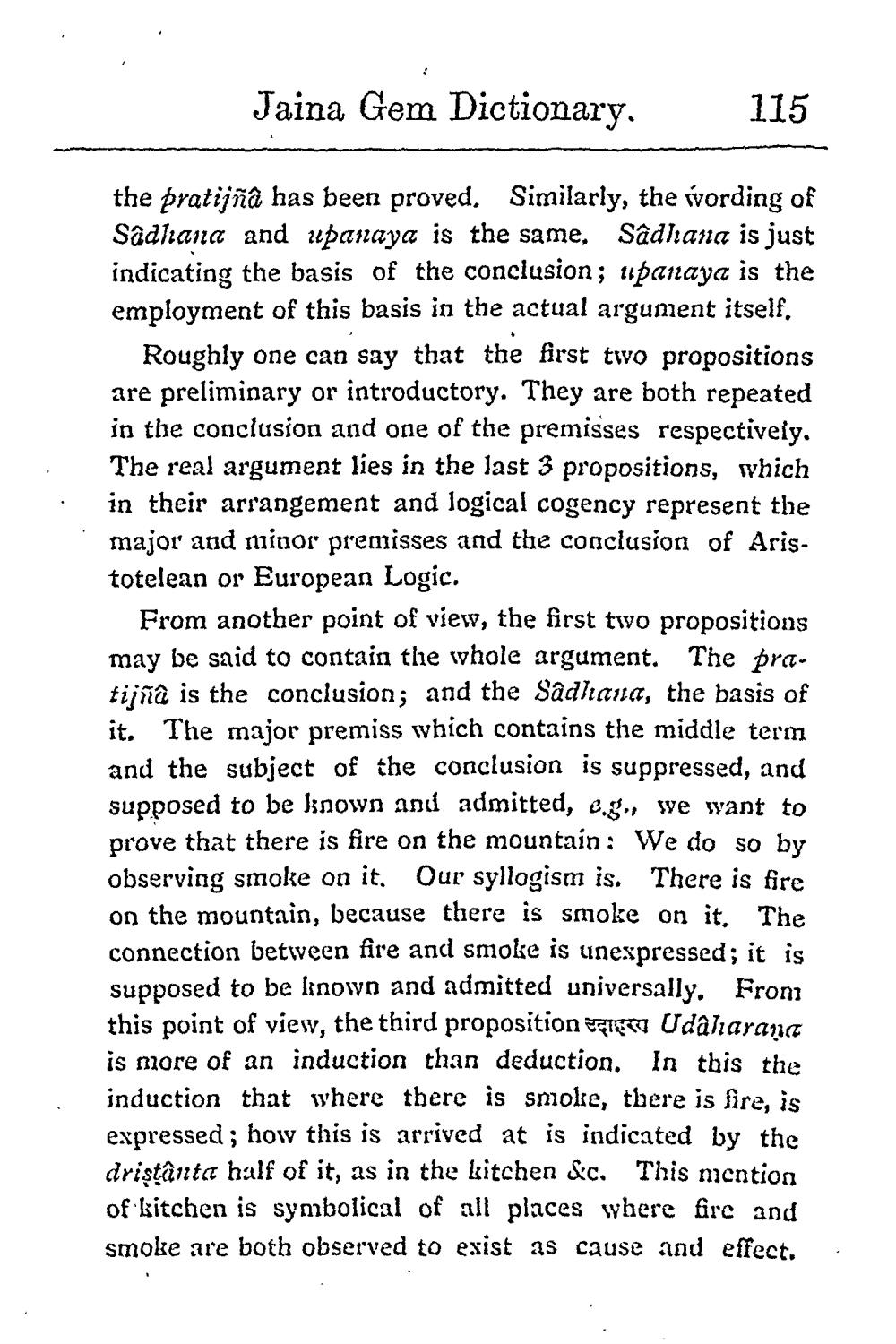________________
Jaina Gem Dictionary.
115
the pratijñâ has been proved. Similarly, the wording of Sadhana and upanaya is the same, Sadhana is just indicating the basis of the conclusion; upanaya is the employment of this basis in the actual argument itself,
Roughly one can say that the first two propositions are preliminary or introductory. They are both repeated in the conclusion and one of the premisses respectively. The real argument lies in the last 3 propositions, which in their arrangement and logical cogency represent the major and minor premisses and the conclusion of Aris. totelean or European Logic.
From another point of view, the first two propositions may be said to contain the whole argument. The pratijñâ is the conclusion; and the Sadhana, the basis of it. The major premiss which contains the middle term and the subject of the conclusion is suppressed, and supposed to be known and admitted, e.g,, we want to prove that there is fire on the mountain: We do so by observing smoke on it. Our syllogism is. There is fire on the mountain, because there is smoke on it. The connection between fire and smoke is unexpressed; it is supposed to be known and admitted universally. Froni this point of view, the third proposition STIEKE Udalarance is more of an induction than deduction. In this the induction that where there is smoke, there is fire, is expressed; how this is arrived at is indicated by the dristânta half of it, as in the kitchen &c. This mention of kitchen is symbolical of all places where fire and smoke are both observed to exist as cause and effect.




